 by our College Data Analytics Team
by our College Data Analytics TeamTESU total enrollment is approximately 10,495 students. 75 are undergraduates and 9 are graduate students.
Male/Female Breakdown of Undergraduates
The full-time TESU undergraduate population is made up of 80% women, and 20% men.
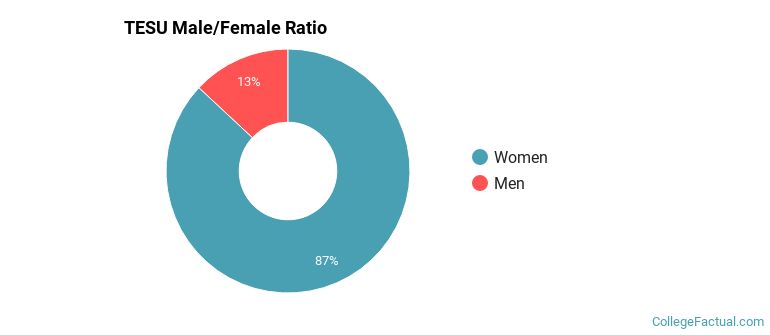
For the gender breakdown for all students, go here.
TESU Racial/Ethnic Breakdown of Undergraduates

| Race/Ethnicity | Number |
|---|---|
| White | 45 |
| Asian | 8 |
| Black or African American | 6 |
| Hispanic | 6 |
| Unknown | 6 |
| Multi-Ethnic | 3 |
| International | 1 |
| Native Hawaiian or Pacific Islander | 0 |
See racial/ethnic breakdown for all students.
Male/Female Breakdown of Graduate Students
About 89% of full-time grad students are women, and 11% men.
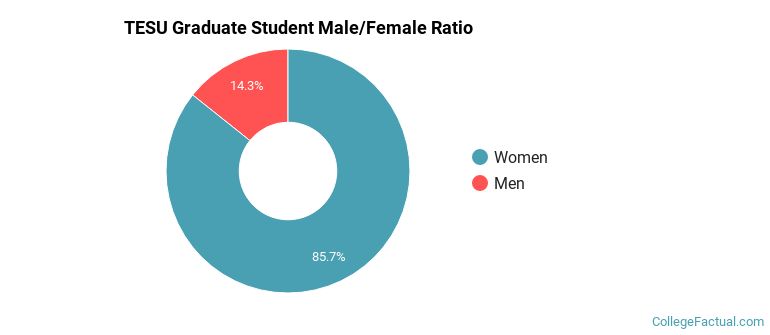
For the gender breakdown for all students, go here.
TESU Racial-Ethnic Breakdown of Graduate Students
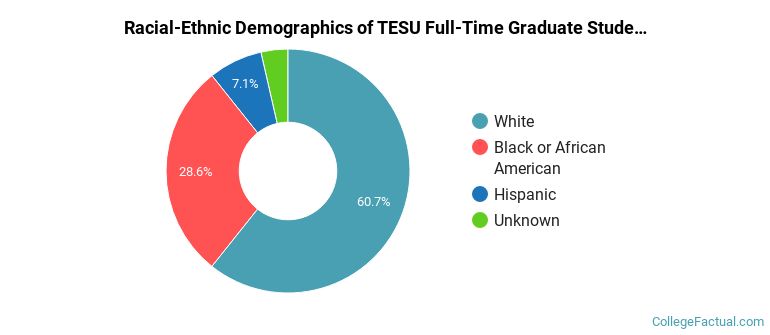
| Race/Ethnicity | Number |
|---|---|
| Black or African American | 4 |
| White | 4 |
| Hispanic | 1 |
| Asian | 0 |
| Native Hawaiian or Pacific Islander | 0 |
| International | 0 |
| Multi-Ethnic | 0 |
| Unknown | 0 |
See racial/ethnic breakdown for all students.

| Race/Ethnicity | Number |
|---|---|
| White | 5,175 |
| Unknown | 1,512 |
| Black or African American | 1,476 |
| Hispanic | 1,327 |
| Asian | 469 |
| Multi-Ethnic | 348 |
| International | 112 |
| Native Hawaiian or Pacific Islander | 44 |
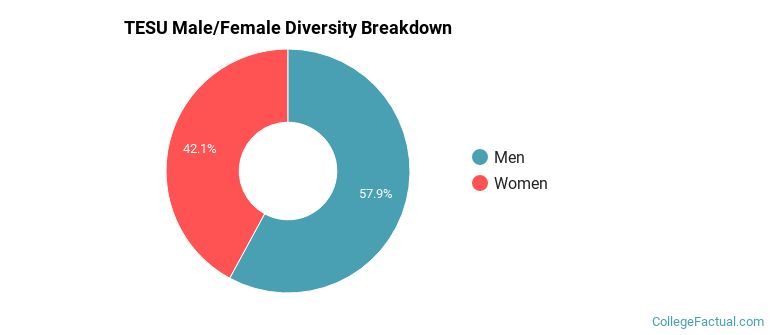
There are approximately 4,335 female students and 6,160 male students at TESU.
Students from 4 countries are represented at this school, with the majority of the international students coming from The Gambia, India, and Venezuela.
Learn more about international students at TESU.
A traditional college student is defined as being between the ages of 18-21. At TESU, 3.93% of students fall into that category, compared to the national average of 60%.
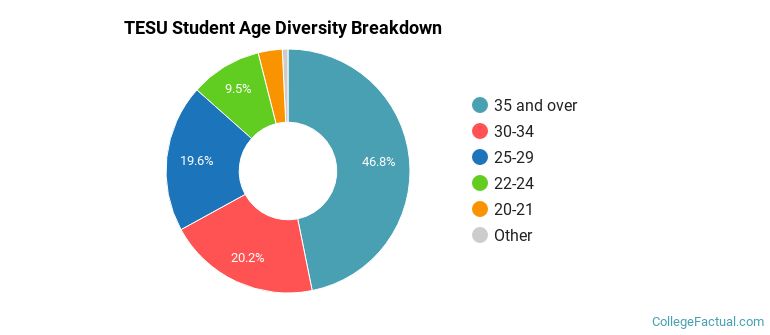
| Student Age Group | Amount |
|---|---|
| 35 and over | 5,564 |
| 30-34 | 2,399 |
| 25-29 | 2,324 |
| 22-24 | 1,127 |
| 20-21 | 380 |
| 18-19 | 89 |
| Under 18 | 0 |
Footnotes
*The racial-ethnic minorities count is calculated by taking the total number of students and subtracting white students, international students, and students whose race/ethnicity was unknown. This number is then divided by the total number of students at the school to obtain the racial-ethnic minorities percentage.
References
Department of Homeland Security Citizenship and Immigration Services
Find out how College Factual created their Diversity Rankings.